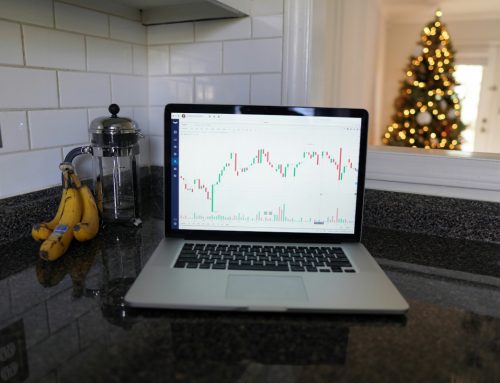Having a reliable system in place for consistently uncovering the best stocks for short-term trading can make or break your success with this strategy.
But, it can get overwhelming for beginners – with all the different stock indicators at your disposal coupled with fundamental analysis, it can feel as if you’re chained to your screen monitoring opportunities for hours a day.
It doesn’t have to be this way, though. We’ll show you how to pick good stocks for short-term trading in less than a minute. You’ll be well on your way to consistently finding lucrative opportunities on autopilot after we introduce you to the VectorVest stock analysis software.
We’ll also cover what makes for a good short-term stock and how to analyze stocks in general so you can see how much simpler our stock advisory makes your investment strategy.
How to Pick Good Stocks for Short-Term Trading
Whether you’re wondering how to find stocks to day trade or how to find stocks to swing trade, this is the foundation of your entire stock investment strategy.
There’s a balance to be struck between making sure you’re doing enough due diligence to find and validate opportunities and working efficiently so it doesn’t feel like you’re stuck in front of your screen analyzing charts all day.
Given how rapidly things change with a short-term stock trading strategy, the margin for error is fairly low, which makes learning how to choose stocks for short-term trading even more important. So, let’s get into how to pick a stock below!
Understanding Volatility and Liquidity
The two most important things to assess when looking at a stock for short-term gains are volatility and liquidity. What do each of these mean, and how do you gauge them?
Volatility shows you how much a stock’s price is moving over time. A stock that remains fairly stagnant won’t give you any room to make a profit. But, volatility can be a double-edged sword, as a stock’s price can fall just as easily as it can rise.
This isn’t necessarily a bad thing, as you need these price dips to give you an opportunity to buy the dip. We’ll show you how to find the most volatile stocks today.
On the other hand, liquidity speaks to how easily you can enter and exit a position. Stocks with ample liquidity have high trading volume, meaning other investors are buying and selling them at a high frequency as well.
Stocks with low liquidity may be harder to buy or sell at the price you want. Worse, you could find yourself getting stuck in your position if the price starts to dip, failing to capture profits in time. You can easily gauge liquidity by assessing trading volume or market capitalization.
Now, how do you actually look at a stock’s volatility and liquidity to determine whether it’s a good stock for short-term trading? That’s where technical analysis comes in.
Analyzing Technical Indicators
So, what is technical analysis of stocks? This involves the use of technical indicators, which are mathematical calculations based on the price, volume, or open interest of a security. Put more simply, they help you spot trends, reversals, and entry or exit points.
The specific indicators you use will vary depending on whether you’re looking for falling stocks to buy the best stocks for covered calls 2024, the best blue chip dividend stocks, or any other classification. That being said, here are some of the most common:
Moving Averages
These smooth out price data to create a clearer picture of the underlying trend behind a stock. There are a few different types of moving averages, with the most common being the Simple Moving Average (SMA) and the Exponential Moving Average (EMA).
SMA is the straightforward average of a stock’s price over a set period, while EMA gives more weight to recent prices, making it more sensitive to short-term price movements. You will use different timeframes for these based on your goals.
In general, though, short-term traders usually look at the 50-day SMA and 200-day SMA to identify the general trend of the market. This tends to be the best moving average for swing trading.
When the 50-day SMA crosses above the 200-day SMA, it’s seen as a bullish signal (known as a Golden Cross), whereas the reverse (a Death Cross) is a bearish signal.
Relative Strength Index (RSI)
RSI measures the speed and magnitude of price movements on a scale of 0 to 100, helping you determine whether a stock is overbought or oversold.
A reading above 70 suggests a stock is overbought and due for a pullback, while a reading below 30 indicates it may be oversold and ripe for a bounce.
You’ll use this information to time your entries and exits, buying when the stock is oversold and selling when it becomes overbought.
Moving Average Convergence Divergence (MACD)
This powerful momentum indicator tracks the relationship between two moving averages (typically the 12-day EMA and 26-day EMA).
The MACD line crossing above the signal line suggests a bullish shift in momentum, whereas the MACD line crossing below the signal line indicates a bearish crossover.
Learn more about the best MACD settings in our blog so you can make the most of this indicator to pick good stocks for short-term investing.
Stochastic Oscillator
This oscillator works similarly to RSI To help you pinpoint overbought and oversold conditions. The key difference is that the stochastic oscillator compares a stock’s closing price to its price range over a specific period for a clearer picture of where the stock sits within its price range.
This helps you get ahead of potential trend reversals, whether it’s to buy at a bottoming-out point or to sell during a price correction. You can learn more about how to do technical analysis of stocks in our blog.
Monitoring Catalysts and News Events
You might be surprised that we’re discussing fundamental analysis in our guide on how to pick good stocks for short-term trading. But, understanding the why behind the stock’s price movement is equally important.
Fundamental analysis involves looking at the business behind the stock – its financial health, standing in its industry, product developments, and more.
That’s why we suggest learning how to do fundamental analysis of stocks along with technical analysis. This is something you can do every morning while you’re enjoying your coffee, as plenty of free stock analysis websites discuss these catalysts and news events.
Most importantly, you need to be aware of a stock’s earnings dates. This tends to be among the most volatile periods for a stock as earnings drive the market. Even minor deviations from the expectation – both positive and negative – can have profound effects on a stock’s price.
Even broader economic events are worth paying attention to, like the Federal Reserve interest rate decisions or non-farm payroll reports. These macroeconomic factors tend to affect entire sectors or the overall market.
Looking at Sector Performance
It’s also a good idea to look at the performance of a stock’s sector as a whole before deciding whether or not to trade it. After all, stocks tend to move in relation to their sector’s overall performance.
You need to be aware of sector rotation, a common market phenomenon where investors shift their money between different sectors depending on the current economic cycle. This plays into market sentiment, another important detail to consider in how to choose short-term stocks.
Defensive sectors such as healthcare or consumer staples often outperform others in a recession as they’re associated with more essential goods. On the other hand, growth-oriented sectors like technology or discretionary goods tend to thrive in an expansionary phase.
Setting Up Stock Screeners and Building a Watch List
Knowing how to pick good stocks for short-term is the hard part – but there is still quite a bit more that goes into executing this trading strategy on a consistent basis. You need to constantly be curating new opportunities that align with your strategy, which is where a screener comes in.
These are tools that help you quickly sift through thousands of stocks to find those that meet specific criteria. Some of the most common criteria include:
- Price: Short-term traders often favor mid-cap and large-cap stocks for their stability and liquidity.
- Volume: High trading volume makes it easier to enter and exit trades, so look for stocks trading at least 1 million shares daily.
- Volatility: Screening for volatility (beta or standard deviation) helps you find stocks more likely to experience big swings.
- Relative Strength Index (RSI): This helps you spot overbought or oversold stocks, pinpointing potential reversals.
Your screener will work around the clock to bring stocks that align with your criteria to your screen. You can then add them to your watchlist for further analysis, and then, execution.
We suggest adding stocks to your watchlist that have clear catalysts on the horizon – be it an earnings report, a keynote conference, or some other technical breakout in sight. This way you’re able to capitalize when the time is right.
You can usually build screeners and watchlists within any investment app for beginner traders, like VectorVest. We’ll talk more about this later, and you can also learn more about the best stock screener for swing trading specifically in our blog. Let’s talk about execution.
Tips on Executing Your Trading Strategy
So you know how to pick good stocks for short-term trading, and you’ve built a great watchlist ripe with lucrative opportunities. Now what?
Before you actually buy a stock you should already have all the decision-making mapped out – not just the specific point at which you’ll buy, but when you’ll take profits or cut losses.
You should also have an idea of how long you intend to hold the stock, whether it’s a quick scalp or a longer swing trade. If the stock’s price remains range-bound after a while, you might end up closing out the position and moving the capital to another opportunity.
One of the most common mistakes we see investors make is not sticking to their trading plan because they get emotional and want to squeeze more profits out of a trade and then miss their window of opportunity. Or, they’re convinced the stock is going to turn around when it starts to fall, but it never does – and they end up taking on a massive loss.
Removing yourself from the decision-making process can help avoid this, so set stop-losses and take-profit orders for every single trade you execute.
As far as how much profit you should be shooting for, or how much loss you should be comfortable with, that will depend on your specific goals and risk tolerance. 1:3 is a good rule of thumb for a risk/reward ratio.
Your position size matters, too. Most experts say you should never invest more than 2-5% of your capital in a single investment.
Streamline Your Short-Term Stock Picking Efforts With VectorVest
Whether you’re trying to learn how to pick good stocks for short-term trading or building a stock portfolio for retirement, being able to consistently and effortlessly uncover the best stocks is a superpower.
It doesn’t have to be as complex or time-consuming as you might assume, either. The best stock analysis app can save you time and stress while empowering you to win more trades with less work. That’s where VectorVest comes in.
Our proprietary stock rating system distills complex technical indicators and fundamental data into 3 simple ratings that give you all the insights you need to make calculated, emotionless investment decisions.
These are relative value (RV), relative safety (RS), and relative timing (RT). Each sits on a simple scale of 0.00-2.00 with 1.00 being the average, allowing for quick and easy interpretation. Better yet, you’re given a buy, sell, or hold recommendation for any given stock at any given time.
VectorVest is also the best stock picker app because you gain access to pre-curated stock screeners for a variety of strategies, whether you’re wondering how to find undervalued stocks or looking for the highest paying dividend stocks, aggressive stocks to buy now, the best stocks to buy for beginners, the best stocks for Roth IRA, or anything in between.
It’s the best stock app for iPhone and the best stock app for Android, but don’t just take us at our word. See for yourself how easy it can be to choose short-term stocks with a free stock analysis at VectorVest today.
Parting Thoughts on How to Choose Short-Term Stocks
There you have it, how to pick good stocks for short-term investing. This strategy can help you earn substantial profits to supplement a full-time job or serve as your sole source of income.
But, this is contingent on knowing how to choose short-term stocks. Now, you can get to work building out screeners and your watch list by focusing on volatility, liquidity, and market timing.
Our blog has more resources on how to combine fundamental and technical analysis, safe dividend stocks, best day of the week to buy stocks, the best dividend stocks, when to sell a stock for profit, when to buy stocks for beginners, dividend vs growth stocks, and more.
Otherwise, the only thing left to do is hit the ground running with VectorVest, saving time and stress while winning more trades with less work. Take the guesswork out of investing today and maximize your returns with our proprietary stock rating system!








Leave A Comment